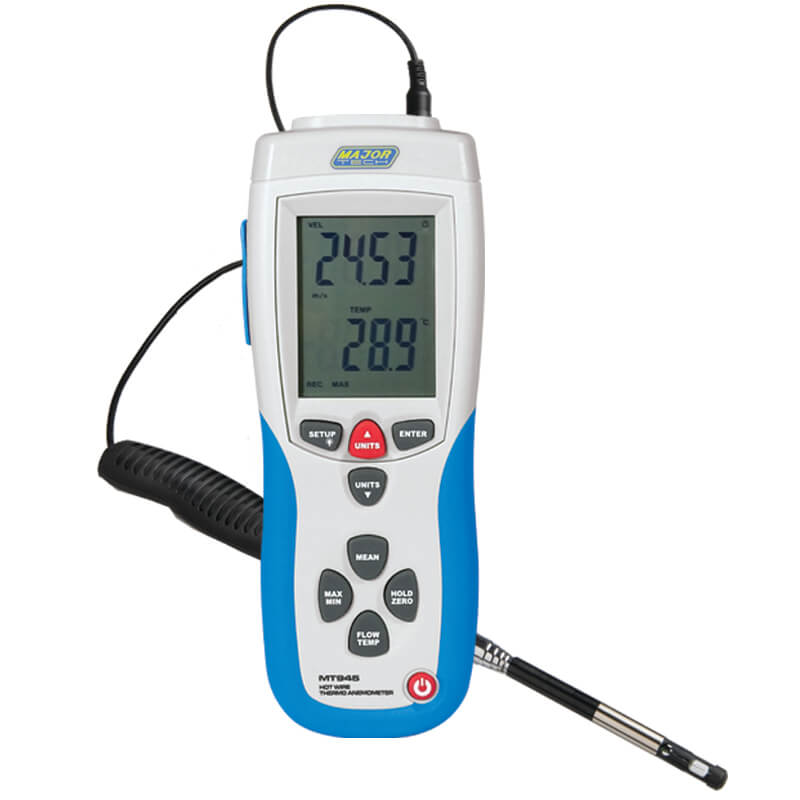How to Maintain and Care for Your Anemometer to Ensure Long Life
How to Maintain and Care for Your Anemometer to Ensure Long Life
Blog Article
All You Need to Learn About Anemometers: Exactly How They Function, Why They Matter, and Where to Utilize Them
Anemometers, though typically forgotten in the realm of clinical instruments, play a vital duty in various areas, using useful understandings into wind speed and air flow patterns. Comprehending the mechanics behind these devices is important for anyone looking for to harness the power of this information. From meteorologists tracking climate patterns to designers creating frameworks with wind lots in mind, the applications of anemometers are varied and far-reaching. As we look into the details of anemometer technology, we will certainly uncover the internal workings of these gadgets, their relevance, and the vital factors to consider when choosing the right anemometer for details applications.

Anemometer Essentials
An essential instrument used to measure wind speed and instructions, the anemometer plays an important function in weather forecasting and various markets. An anemometer generally consists of 3 or four cups that revolve in the wind, a vane that points into the wind, and sensing units to track the turnings or movements. By determining the turnings or motions over a particular period, the anemometer can determine wind rate. The vane helps establish wind instructions by pointing right into the wind, supplying valuable information for weather projecting, aviation, maritime procedures, environmental surveillance, and wind energy applications.
There are various sorts of anemometers readily available, consisting of cup anemometers, vane anemometers, hot-wire anemometers, and sonic anemometers, each with its unique functions and applications. Cup anemometers are generally utilized for fundamental wind rate measurements, while vane anemometers are liked for directional dimensions. Hot-wire anemometers appropriate for reduced airspeeds, and sonic anemometers are ideal for high-precision dimensions in study and industrial settings. Comprehending the essentials of anemometers is vital for exact wind information collection and analysis across different markets.
Concepts of Anemometer Procedure
Structure on the foundational understanding of anemometer basics, the concepts of anemometer procedure illuminate the mechanics behind wind rate and instructions measurements. Mug anemometers, for instance, have 3 or more cups that record the wind, triggering them to spin faster as the wind rate boosts. Hot-wire anemometers count on a warmed wire that cools down as wind passes over it, with the price of cooling identifying the wind speed.
Value of Anemometers
Anemometers play an important function in determining wind rate and instructions, offering essential data for weather projecting, environment studies, environmental tracking, and aeronautics operations. Meteorologists rely on anemometers to collect exact wind information, helping them understand weather patterns, anticipate storms, and problem timely warnings to the public. Wind farm operators make use of anemometers to assess wind problems and take full advantage of electricity production from wind generators.
Applications Across Different Industries
Applications of anemometers span throughout varied markets, showcasing their convenience and energy beyond weather forecasting. In the renewable power industry, anemometers play an essential duty navigate to these guys in assessing wind conditions for wind ranch positionings, guaranteeing ideal energy production. Industries like construction and mining make use of anemometers to keep an eye on wind rates, essential for security methods, especially when working at elevations or in open-pit mines where solid winds can present threats. Anemometers are also indispensable in the aviation market, helping pilots in recognizing airspeed and wind direction for safe take-offs and touchdowns. The maritime sector gain from anemometers for ship navigating, assisting sailors anticipate climate modifications and readjust courses as necessary. In agriculture, anemometers help farmers in handling plant spraying by offering real-time information on wind rate to avoid drift. Moreover, anemometers locate applications in HVAC systems to maximize air movement and enhance energy effectiveness in structures. The diverse use situations of anemometers highlight their value throughout numerous sectors, highlighting their essential duty in improving operational safety and effectiveness (anemometer).

Selecting the Right Anemometer for Your Demands
For basic functions, a cup anemometer is appropriate for determining wind speed, while a vane anemometer provides wind instructions information. Hot-wire anemometers are excellent for reduced airspeed dimensions, and ultrasonic anemometers supply high precision and toughness.

Verdict
In verdict, anemometers play a vital duty in measuring wind rate and instructions across different markets. It is vital to consider the relevance of anemometers in order to make enlightened choices when choosing the most appropriate gadget for gauging wind problems.
There are various types of anemometers offered, consisting of mug anemometers, vane anemometers, hot-wire anemometers, and sonic anemometers, each with its unique features and applications. Cup anemometers are frequently made use of for basic wind speed measurements, while vane anemometers are liked for directional dimensions. Hot-wire anemometers are ideal for reduced airspeeds, and sonic anemometers are ideal for high-precision measurements in research and commercial settings.Building on the foundational understanding of anemometer fundamentals, the principles of anemometer procedure illuminate the technicians behind wind rate and instructions go to this site dimensions. For basic objectives, a mug anemometer is ideal for gauging wind rate, while a vane anemometer gives wind instructions information.
Report this page